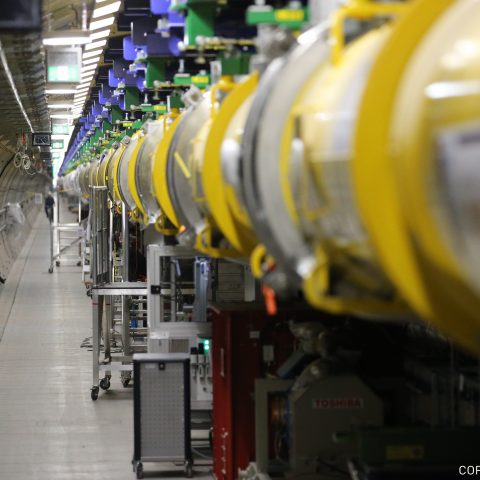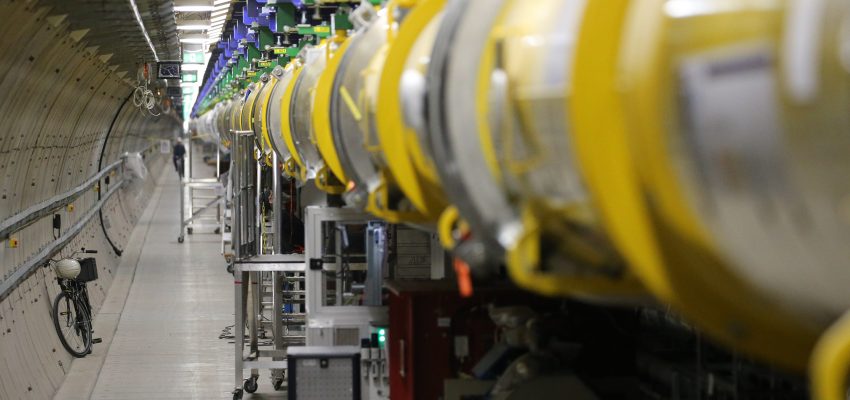In high-end test applications such as real-time motion control, medical technology and advanced physics, there is a particular focus on synchronization, rear I/O, high availability, redundancy and remote management. In recent years, we have observed a high use of MicroTCA.4 systems for these applications, following the open standards defined by the PICMG consortium. Also, electronic cabinets with an air/water heat exchanger cooling function are often chosen to allow a constant temperature for the electronics in the system.
Supporting High-End Research Facilities
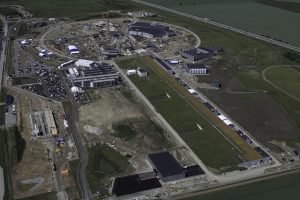 Image © Perry Nordeng and ESS
Image © Perry Nordeng and ESS
The European Spallation Source (ESS) is a multi-disciplinary research facility based on what will be the world’s most powerful pulsed neutron source. This technology will allow scientists to see and understand basic atomic structures unachievable at other neutron sources. Experimentation is expected to begin in 2023 and yield scientific breakthroughs in materials, energy, health, and the environment. The construction of the ESS started in 2014. The user program should begin in 2023.
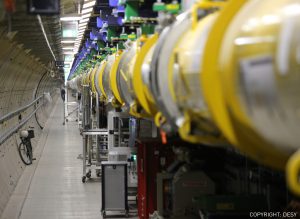 Image © DESY
Image © DESY
The European XFEL was introduced in 2017 as the world’s largest and brightest X-Ray laser. With a 3.4 km long tunnel housing a linear accelerator, the XFEL is capable of accelerating electrons to an energy up to 17.5 GeV. The result is ultrashort X-ray flashes, up to 27,000 per second that have applications in chemistry, biology and material science. To ensure data accuracy, DESY required computing systems with precise timing capable of processing and synchronizing multiple data sources.

Currently, nVent SCHROFF delivers MTCA.4 embedded systems to these advanced physics applications, which are used to guide the electrons, collect and process data. MTCA.4 (Micro Telecommunications Computing Architecture) is an open standard defined by the PICMG consortium. The standard describes the electrical, mechanical, and thermal requirements to ensure that AMC’s (Advanced Mezzanine Cards) and RTM’s (Rear Transition Modules) are supported.
Benefits when choosing MTCA.4
- You will meet the requirements for data acquisition, by connecting high numbers of measuring cables to the RTM’s
- The system will support PCIe, 10 Gigabit Ethernet and other high-speed interconnects
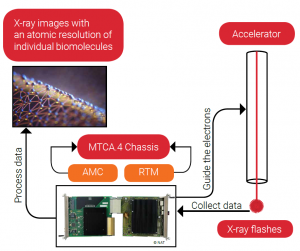
Cooling Requirements of the Physics Applications
In Advanced Physics applications you face several cooling requirements such as:
- Equipment is frequently installed in large rooms or halls without air conditioning, so dedicated cooling is required.
- Due to increasing thermal loads active (with fans) cooling is now preferred to passive (fanless) cooling.
- The electronics enclosed need precise temperature control to ensure performance and accuracy in measurements.
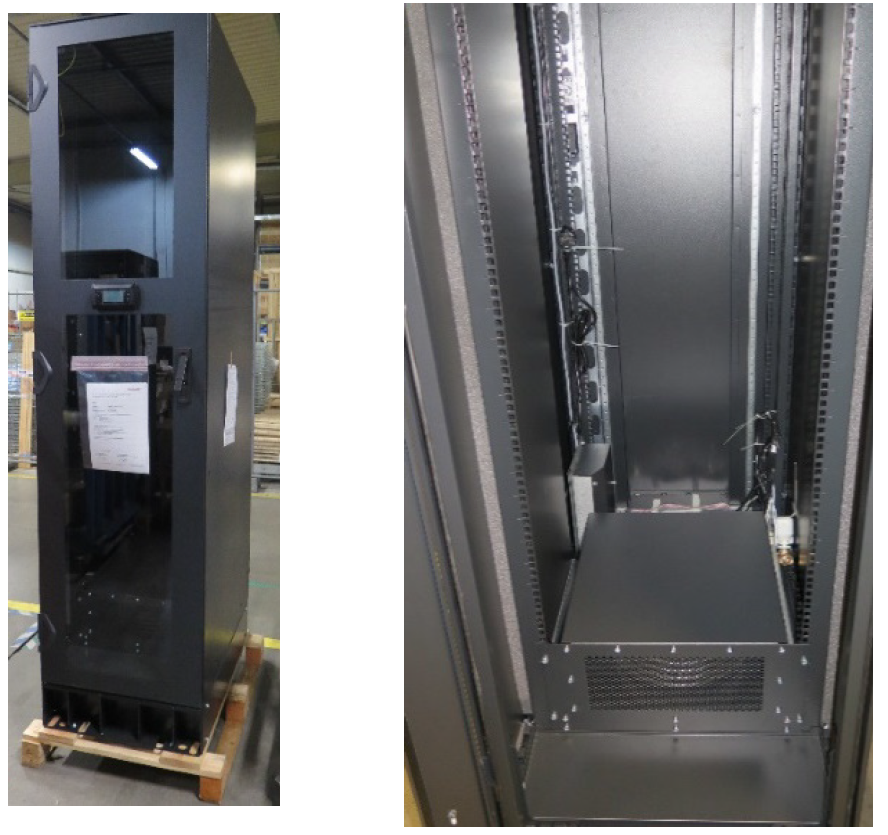
In order to account for the needs of the advanced physics community, we developed the nVent SCHROFF LHX3 Electronics Cabinet. The LHX3 features an integrated air-to-water heat exchanger and customizable airflow. The traditional airflow configuration is bottom-to-top, but thanks to a circular cooling coil, the LHX3 allows flexibility to direct cool air in any direction, even front to rear. The heat exchanger resides at the base of the cabinet and is available in two configurations: as a built-in unit specifically for bottom-to-top airflow, or as a removable rackmount unit. The fan is pulling the warm exhaust air from the cabinet top part and directing it throughout the channels on cabinet side walls or rear door towards the heat exchanger, where it gets cooled and supplied back to the electronics.
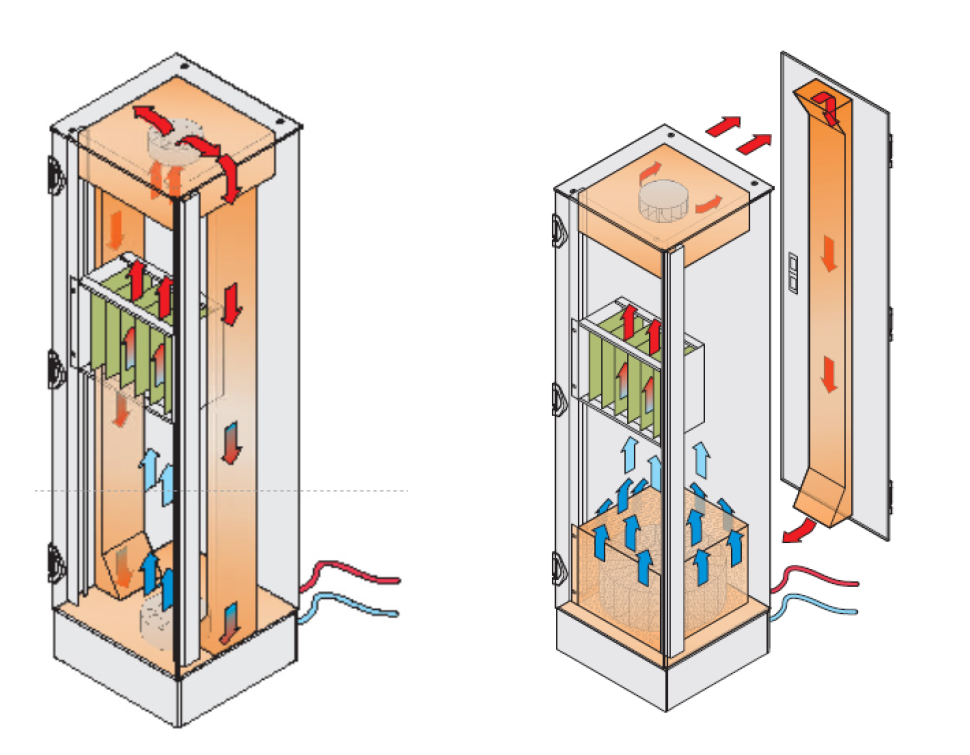
Benefits when choosing an Air-to-Water heat exchanger:
- Supreme IP and thermal protection
- Controllable EC fans and valve
- Modern and powerful controller
- Control accuracy +/- 0.1K p.p.
Key components of the LHX3 cabinet


